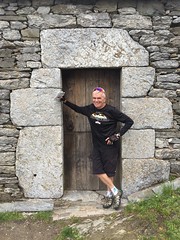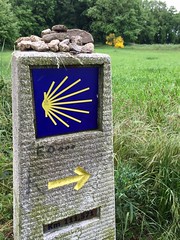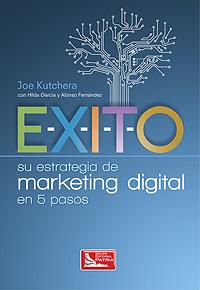For years, I only dreamed about walking the 1000+ year old pilgrimage known as “Camino de Santiago,” or, “The Way of St. James” across Northern Spain, leading to the central cathedral in Santiago de Compostela.
I scribbled it on the top of my bucket list. But I thought, when will I really ever have the time to hike across Spain? To walk the “Camino Francés,” the traditional French route, requires about one month.
While studying Spanish in high school and university, I had learned about the “The Way of St. James” as a part of discovering Spain’s history and geography. Years later, I saw the movie, The Way. Emilio Estevez directs and acts in the film along with his father, Martin Sheen. They tell the story of a curmudgeonly, workaholic father going to Southern France to recover the body of his idealistic son, a Ph.D. dropout, who died as he was beginning the pilgrimage. The father ends up walking The Way to honor his son (using all of his gear). He meets seemingly random people along his journey. Yet, as each person shares their story, they uncover larger lessons of life, especially as each opens up about their obstacles and hardships. Watch the trailer here:
In speaking with other Americans on the Camino, many mentioned the movie The Way as the spark that ignited their interest in walking the Camino.
More recently, I took an entire course about the history and architecture of the pilgrimage dedicated to Saint James at the Instituto Cervantes. The movie and class reinforced my desire to make this once-in-a-lifetime adventure. Someday, I thought, I want to walk the Camino and allow myself time to reflect on life.
My Motivation for Going on The Camino
In March 2016, my father passed away. One year later, I wondered, “What can I do to honor him?” My Dad had loved biking, traveling, learning languages, and studying European history. I grew up biking around Milwaukee with him. In addition, you could call me a hispanophile: I have studied the Spanish language for over 12 years. I lived and worked in Mexico City for two years and in San Juan, Puerto Rico for a summer. My wife, Lulu, is from Mexico. My book tour for E-X-I-T-O: Su Estrategia de Marketing Digital en 5 Pasos brought me to Spain, Mexico, Guatemala, and Ecuador. Yet, I always yearned to learn more about Spain and Latin America. [An hispanophile is a person who is fond of Spain and Spanish-speaking countries as well as its people, cultures and language.]
The Invitation
Soon after the anniversary of my Dad’s passing, Rev. Dr. Mark Cooper (in photo at left) from St. James Episcopal Church asked me, “Would you like to bike with us on the Camino de Santiago this May?” I took it as a sign of divine intervention. When the pastor of St. James Church asks you to walk The Way of St. James, I thought, how could I not say YES? Also, biking the trip meant it wouldn’t require as much time away from family and work. Usually it takes a month or more to walk the entire route from the Southern border of France (across the Pyrenees mountains) through the Northern provinces of Spain to the main cathedral in the city of Santiago de Compostela.
So, in May 2017, I joined Rev. Dr. Mark Cooper and 26 parishioners from St. James Episcopal Church to traverse the paths along “El Camino.” We met in León and biked the 200-mile route to Santiago de Compostela over seven days (May 14-20) across well-worn pathways between farm fields, alongside highways, rivers and moss-covered brick walls. We always looked for the markers with the yellow scallop shell to guide us (see photo below right).
The Pilgrims’ Greeting
Along The Way, fellow pilgrims and locals greet one another with the saying “Buen Camino,” which literally means “good road” or “good path” in Spanish. But it signifies something more than “have a good trip” or “have a safe voyage.” It also imparts a wish to have a spiritually satisfying journey.
The Camino Passport
At the outset of our pilgrimage, we received a “credencial,” the Spanish word for a “Pilgrim’s Passport” from Camino Ways, the company that expertly organized our trip. We carefully guarded this document as we received “sellos” (stamps) at hotels, restaurants, bars, cafes, churches, and “albergues” (inns) along the way. Aggregating unique stamps from each stop provided the necessary proof upon reaching our final destination in Santiago de Compostela: la Oficina de Acogida de Peregrinos (Pilgrims’ Welcome Office). We needed to receive a minimum of two stamps per day to show that we had biked the required minimum of 200km. (The minimum for pilgrims on foot is 100km.) With the completed “Pilgrim’s Passport,” we received the “Compostela,” the religious certificate from the Catholic Church and Camino organization, certifying that we had completed our journey. Here is my passport with its many stamps:
The History of The Way of St. James
The Camino began in the 9th century when Catholics journeyed to see and honor the relics of the Apostle St. James (Santiago in Spanish). Legend has it that his remains are buried in the central cathedral of the capital of Galicia, the Northwestern most state of Spain just above Portugal. Santiago de Compostela evolved into a holy city as one of the main Christian pilgrimages, rivaling even the Holy Land and Rome. The Pilgrimage to Santiago reached its peak towards the end of the Medieval Period (476 AD – 1492).
When war, plague and famine ravaged Spain and Europe starting in the 1500’s, the Camino’s popularity diminished but never quite died out. In the 19th and early 20th centuries, the pilgrimage once again became an important religious obligation. And in recent years, the Camino has surged again in popularity since the release of Emilio Estevez’s movie, The Way, but now perhaps with a more spiritual emphasis.
Millions of pilgrims have made the trek to Compostela. Walking this well-worn path humbled me. I felt small, as one among many, connected to all those who came before me as well as to everyone who will walk the pilgrimage after I’m gone. For some, the trip is an adventure and a vacation, albeit a physically challenging one. For others, it is a religious experience. Yet for nearly everyone, the journey represents a time to reflect on one’s life and connect with the spirit. It is not uncommon to meet a pilgrim and have them ask you, “Why are you walking the Camino?” And so, you can find yourself in a meaningful conversation, perhaps sharing your inner most thoughts and feelings with a complete stranger in the middle of the forest.
The Camino’s Challenges
Around the year 1140, the guidebook Codex Calixtinus was published, providing pilgrims with necessary travel tips like where to find safe, clean drinking water as well as religious, architectural and historical points of interest en route. In preparation for my pilgrimage, I bought a modern translation in English called The Pilgrim’s Guide to Santiago de Compostela (edited by William Melczer).
Reading it opened my eyes to the fact that many people before me (centuries ago) had died of unclean drinking water, food poisoning and old age while walking the Camino. Others still struggled to find trustworthy innkeepers that wouldn’t over-charge them. This historical text provided an incredible perspective.
For me and my fellow pilgrims today, we didn’t even THINK about such dilemmas. We stayed in lovely if modest hotels with excellent dinners and wine waiting for us every night. Yet, we faced challenges that so many experience: blisters, exhaustion, dehydration, constipation, and even hypothermia (when biking down from a frigid mountain top). Thank God that a few close calls with bypassing trucks were just that: misses. (I learned that the Spanish word for “prune” is “ciruela pasa.”)
The most challenging day came mid-trip when we traversed a mountain going into an old Roman village, O Cebreiro. Pedaling up the slope pushed us to our limits. The intense physical exertion made me go deeper into myself, for greater spiritual reflection. I could only pedal and think in that very moment, leaving the past behind. Most of us started biking up what looked like a hill. We switched to walking after realizing how the road continued sloping upward. We arrived into O Cebreiro taking in the breathtaking view of the valley below just as the chilly fog rolled in. We were exhausted and sweaty but suddenly cold. Was May really this frigid…in Spain? Apparently on Galicia’s mountain tops it was.
The downhill road from O Cebreiro
At dinner that night, we asked our trusted, tri-lingual tour guide, Michael Christiansen, “Was that the last mountain?” He laughed, saying, “Galicia is FULL of mountains.” We wondered if we could make it. The trip was billed as moderately difficult, but proved much more challenging. We descended the mountain the next day wearing multiple layers to shield ourselves from the nearly freezing temperatures. We gathered for hot espresso at a bar at the base of the mountain to warm up before going further. From here, our treks seemed to get longer as the days went on.
The verdant view from O Cebreiro
Our Final Day
We planned to arrive into Santiago de Compostela on our final day (Saturday, May 20), around 4pm, a much earlier finish than usual. This would allow us enough time to get our certificates before the office closed. Our group gathered in front of Santiago de Compostela Cathedral, in Obradoiro Square, to take this final photo all together:
We then biked to our hotel to check in and turn in our bicycles with Camino Ways. We agreed to all meet in the lobby. Mark approached me saying that he could not find his credential. He appeared sad and frustrated. I accompanied him back up to his room. He looked thru his things one more time. Ugh. His pilgrim’s passport was nowhere to be found. I felt devastated. This meant that our trusted spiritual/religious leader could not get his certificate, the proof that he had completed the Camino de Santiago. He wondered, “Did I leave it at our last stop at a small chapel on the outskirts of the city?”
A few years earlier, Mark had walked his first Camino with his daughter, following the passing of his wife. They had walked most of the route but took a train for the final stretch. One of the requirements to receive the Compostela, is that hikers must walk the final 100km. Thus, he and Laura did not receive their certificates on that trip either.
I entered the lobby and told everyone that we would leave without Mark. Everyone showed their disappointment. We walked up the winding streets to the main square in front of the Cathedral and then down the ancient staircase to la Oficina de Acogida de Peregrinos (Pilgrims’ Welcome Office), where we got in line to receive our Compostelas. In the meantime, Mark meditated back in his hotel room. He wondered, “What did this mean? Was I supposed to go on the Camino again for a third time?”
Throngs of pilgrims waited in line to receive their certificates. After 40 minutes, my turn came. The young man behind the counter asked me my name and a few questions about my pilgrimage. He then gave me my Compostela certificate, with the original text in Latin, which you can see here:
I told him about Mark, our pastor, losing his credential. He said to come back with him and skip the line. I called Mark on his cell phone to tell him to meet me at the Pilgrims’ Welcome Office. He was already there! After meditating, he thought that if anyone found it, they might turn it in at the pilgrims office.
We walked through the courtyard and entered via the exit. The same young man behind the counter greeted us and asked Mark to confirm his name. Mark showed his clergy ID and moments later received his certificate in hand! Off we went to celebrate at our group dinner. Mark appeared noticeably relieved at helping everyone finish safely. The route had proved much more difficult than expected.
Mark now remembered taking his things out in the middle of the main square in front of the Cathedral in Santiago. Perhaps it fell out when he took out his phone? We walked up to the main hotel on square and then down to the police station and asked if anyone had turned in his Camino Booklet. Unfortunately, no.
At our final dinner, Mark gave a warm speech thanking Michael Christiansen, our guide, “who was like a brother.” He stood up in response to Mark’s speech and said, he hadn’t worked with a group where he had felt so much love. In closing, he reminded us “to look within ourselves for the light.” And then he waved, said goodbye and ran off to catch his train as we all applauded.
An Astonishing Discovery and Departure
I slept deeply that night as if in a trance and awoke at 6am to finish packing. The day before, Mark and I discovered that we were to depart on the same flight to Barcelona leaving Santiago at 8:55am. We agreed to meet at the front desk at 7am and take a taxi together to the airport. As I packed my final belongings into my backpack, a few items remained on the desk. I checked my plane ticket, my U.S. Passport and wallet. Then, underneath those essential items I discovered … an extra credential. What?!?! I opened it up and saw Mark Cooper’s name. How had his pilgrim’s passport ended up here?
The day before, we had all entered the hotel lobby completely exhausted and sweaty. Chaos ensued as we crowded around the front desk to check into the hotel at the same time. Mark encouraged us to quickly drop off our bags in our rooms and then hurry back downstairs in order to get our certificates. I remember placing my bike bag, helmet, gloves and Passport on the counter. Some items got shuffled around. Someone’s ID’s and paperwork fell to the floor. We jostled to pick them up. Now I realized, upon reflection, that is when I mistakenly picked up Mark’s credential and put it under my passport.
Flash forward to the next morning: I stepped out of the elevator into the lobby at 7am as planned. I handed Mark his credential without even saying good morning. He stood there stunned with his jaw open, thrilled at the same time. We both saw it as a miracle. I had helped Mark get his certificate and yet I had had his pilgrim’s passport all along!
Conclusion
My Dad passed away a year before my Camino. I biked it to honor him and process that experience. Along the way, I made a new friend and mentor in Rev. Dr. Mark Cooper. And in helping Mark obtain his Compostela certificate, I discovered that I had it I all along.
Buen Camino to you…wherever your journey takes you.
You can read Mark’s version of this story on his blog. Our fellow pilgrim, Stokes Grymes, described his compelling experience biking up the mountain to O Cebreiro on Facebook.
And you can see my collection of photos from our Camino de Santiago bike trip with St. James Episcopal Church on Flickr here:


















